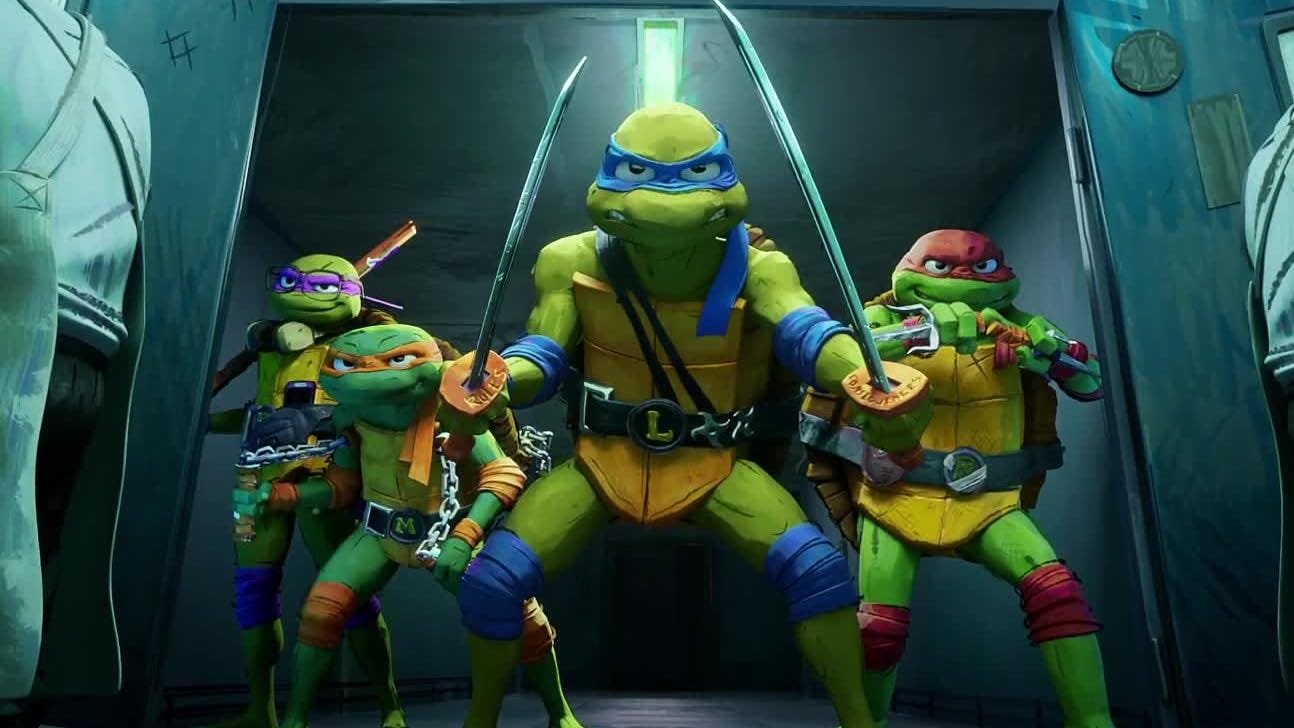Teenage Mutant Ninja Turtles: Mutant Mayhem
Heroes in a halfshell
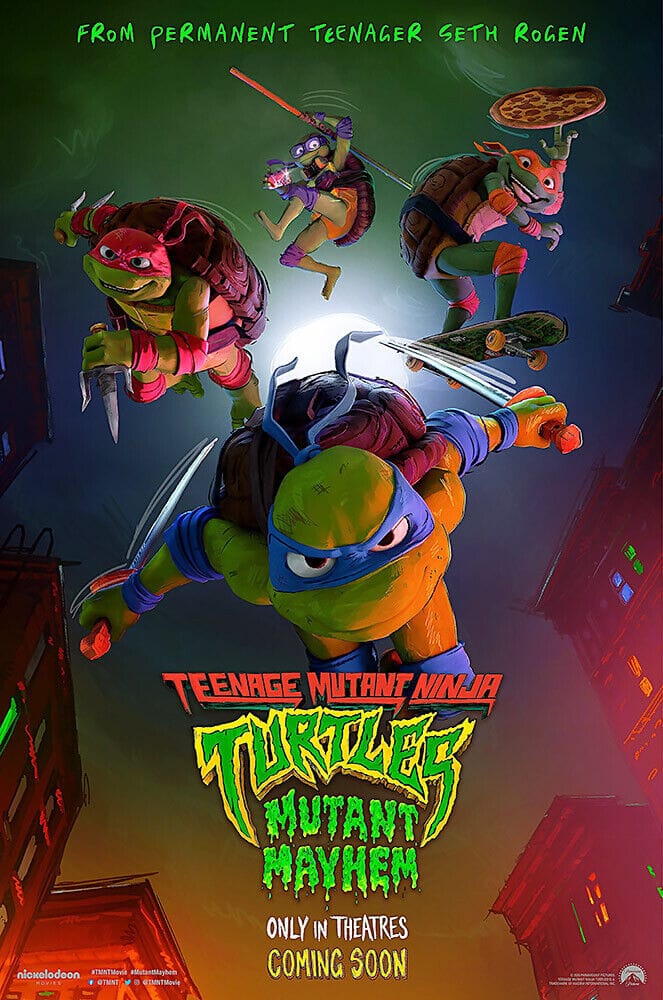
Raised by their father Splinter, the mutated rat and ninja master, to always hide themselves from the prejudices and abuse of the human world, the Turtle brothers decide they’ve had enough. They recruit their new friend, April O'Neil, to help them gain acceptance amongst New Yorkers by taking on a mysterious crime syndicate. But soon enough, they find themselves in over their heads, four brothers… teenagers… mutants… ninjas… turtles… standing together… alone against an army…
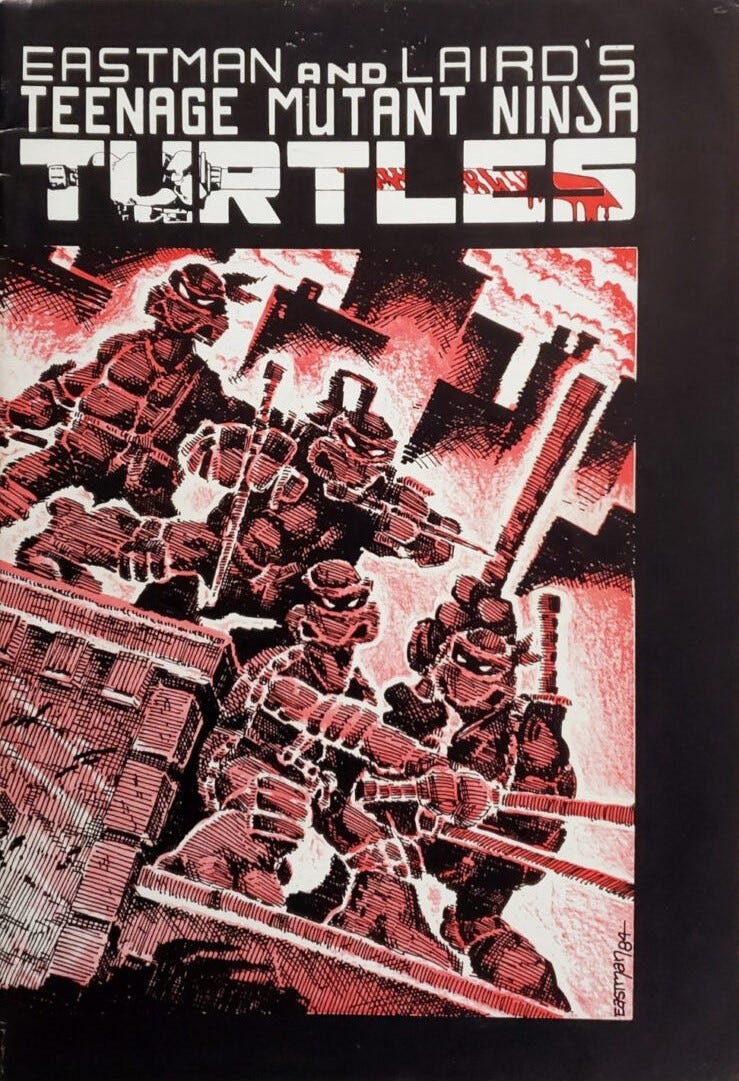
The Teenage Mutant Ninja Turtles were first published in 1984.
1984 was a big nerd year. At the movies, films like The Last Starfighter, The Neverending Story, Conan the Destroyer, Dune, Starman, Gremlins, Buckaroo Bonzai, Romancing the Stone, Night of the Comet, The Terminator, Ghostbusters, Karate Kid, and of course, Indiana Jones and the Temple of Doom were all playing. So were Repo Man and Blood Simple, which I didn’t see at the time, but I would eventually, and they would both leave a mark. Also, Marvel comics published Secret Wars that year. It was the first mega-crossover comic event of its kind, and the 12 issue series filled the local spinner racks. Ewok Adventure was on TV too, one of the first Star Wars TV shows, a storied franchise that was only just beginning its legacy of disappointing fans the whole world over.
The Teenage Mutant Ninja Turtles, at least at first, were something else. Small, different, and just for kids. It was one of those things that was passed along through Kid World somehow, that mysterious Whisper Network that existed long before the internet, before there was really any kind of regular kid-aimed entertainment that wasn’t for babies, or were either cartoons from our parents’ generation, or meant to sell toys. It was a time when MTV was still becoming a taste-maker, and still only played videos. There wasn’t even a Wizard magazine to tell you about any upcoming comics you didn’t know about. This Whisper Network somehow taught us all how to use a pencil or a battery in order to actually play the stand-up arcade version of Track & Field, and it was how we all knew that Pop Rocks and Coke had killed Mikey from the Life Cereal commercials. How did this kind of information get passed between us all so thoroughly and completely across the long miles?
Who knows, but Teenage Mutant Ninja Turtles was one of those things.
Originally meant as a parody of the current state of the popular X-Men and Daredevil comics, the idea had a strangely intoxicating alchemy. It was an immediate hit, maybe not in sales, but that can probably be mostly attributed to the fact that there weren’t a lot of comic shops then, and that most of the shop’s potential customer base probably wouldn’t have been able to get there on their bikes, and they certainly wouldn’t have been able to actually purchase anything without their parents’ support, because in the 80s, Baby Boomer parents were too busy doing coke at shitty happy hour spots to even bother wondering where their children were, as we roamed the streets on our BMXs, a reality that eventually inspired a Marvel house ad riffing on a well-known PSA.
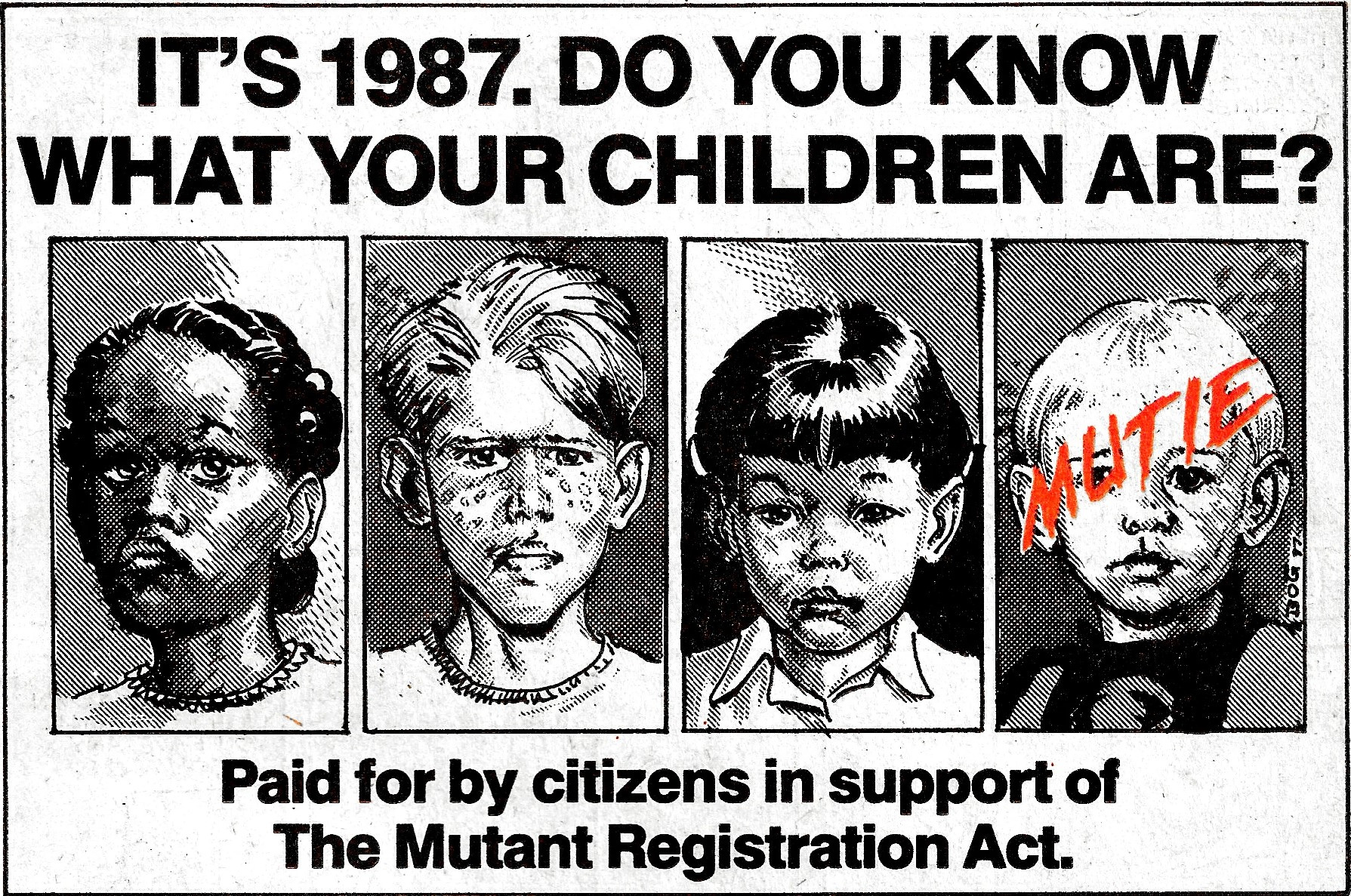
Anyway, so one day, the comic was just there, and everyone knew about it. For me, the Teenage Mutant Ninja Turtle franchise might have been the birth of my awareness of “indie” or “alternative” comics. I remember first hearing the name in Mrs. Miller’s 4th Grade class, and having no idea what it was, but… I did like ninjas. In fact, it was fair to say that ninjas were ten year old Jon’s jam.
But turtles…?
Then, random issues started floating around, and we would all gather around some lucky kid’s desk as he smugly allowed us all a brief glimpse—No Touching!—of this strange comic, with its scratchy black and white art, and its weird cast of characters with their weird old-timey names. They had ninja weapons, and they used them too. It was much more violent than regular comics were, and there was swearing too. I loved it. The whole thing felt like it was something that would be forbidden if adults knew literally anything about it, which they didn’t at the time. Later it was inescapable, but then at the start, they had no idea, mostly because the 80s wasn’t called “the Decade of Decadence where Greed was Good” due to a love of alliteration, so we could read it right under their noses. It was secret and magical and fantastic.
I coveted those comics like the desert needs the rain…
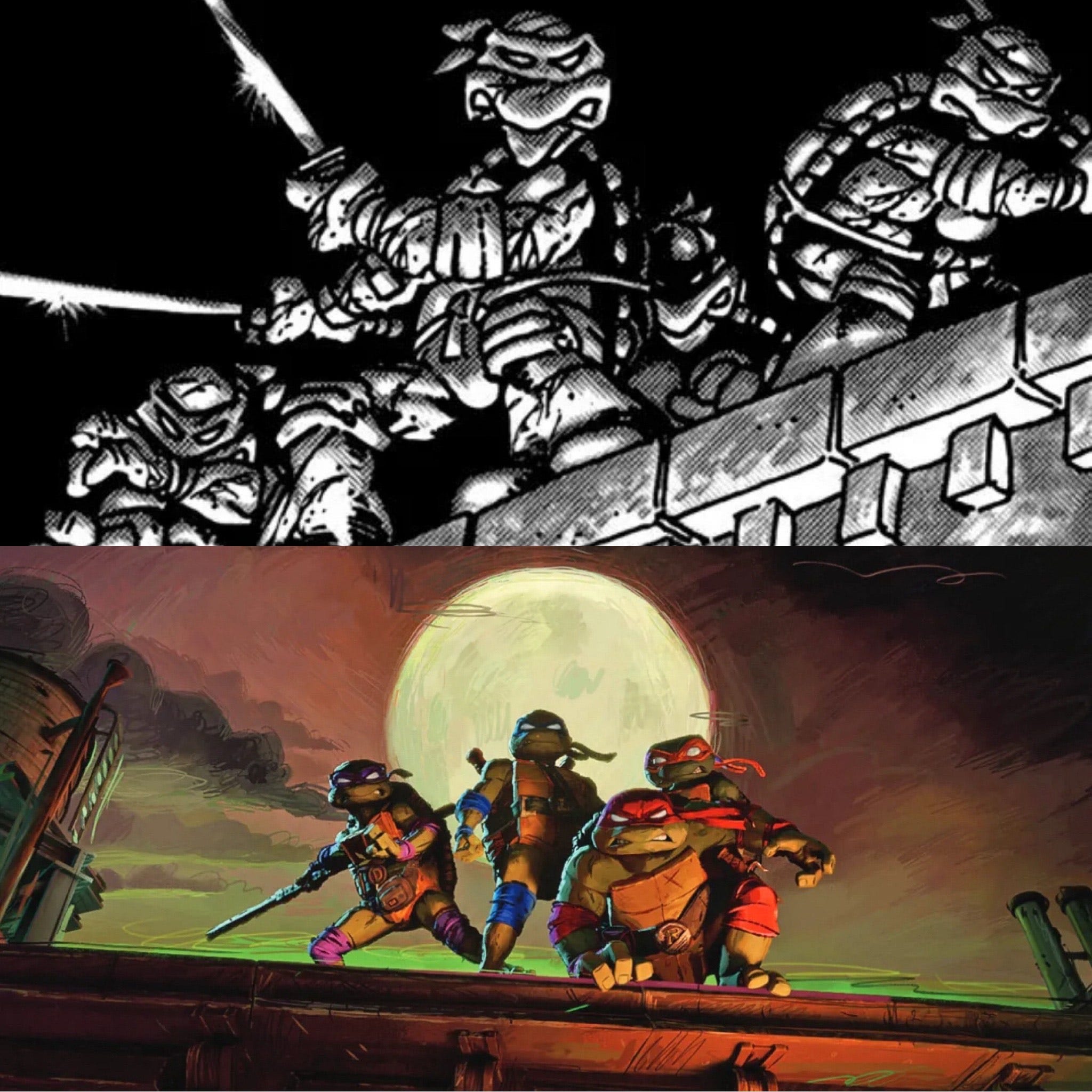
Since then, the franchise has gone on to make billions. More child-friendly comics, some child-friendly cartoons, child-friendly toys, and multiple versions of child-friendly movies (the original live-action one from 1990 featured some incredible fight choreography, just fyi, and is still kinda awesome.) This new movie is the latest chapter in the long story of this money-making machine, this beloved old franchise, relaunching the Turtles for a new generation, priming the money-pump, by retelling their origins in a modern setting.
And it totally works. I know I was bitching a little with the whole “child-friendly” thing, but having kids voice the characters of the turtles was a genius move. Making the turtles 15 years old was too.
It’s a good time.
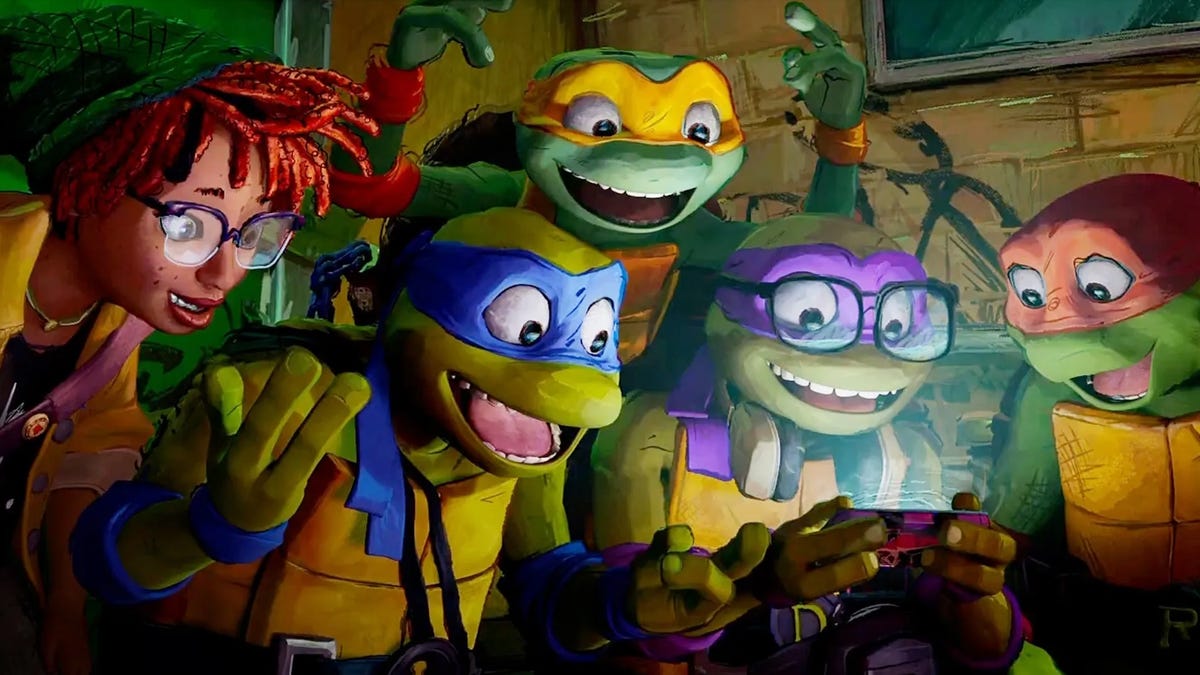
Featuring a bold and frankly gorgeous animation style, one that is obviously at least partially inspired by the Spiderverse franchise, and produced by Point Grey Pictures, Seth Rogen’s Production House—which, a few bad choices aside, has been putting out a pretty respectable number of decent genre stuff in both the theatres and on TV—it’s fair to say that this film is another nostalgia grab, sure, but when it’s also smart, cute, and funny, and the cast is really great together… who cares?
Since it’s a reboot, the film starts with the retelling of the origin, opening with a scientist named Baxter Stockman, the man responsible for creating the infamous ooze that turns ordinary creatures into mutants. When the authorities break into Baxter’s basement lair, they find Stockman and his first mutant experiment, a little fly-boy that Stockman treats as his own. During the raid, Stockman is killed and the little fly-boy escapes—a chicken that will come home to roost later—and the ooze is spilled into the sewers, leading to the birth of our familiar heroes…
In blue, with dual katanas, first up is the good kid and the team leader, Leonardo. Next, in orange, with a pair of nunchakus, it’s the funny goofball, Michelangelo. Then, in purple and wielding a bo staff, it’s the nerdy tech-genius, Donatello, and finally, it’s everyone’s favorite hothead (certainly mine), wearing red and carrying a pair of sais, it’s the big man himself… Raphael.
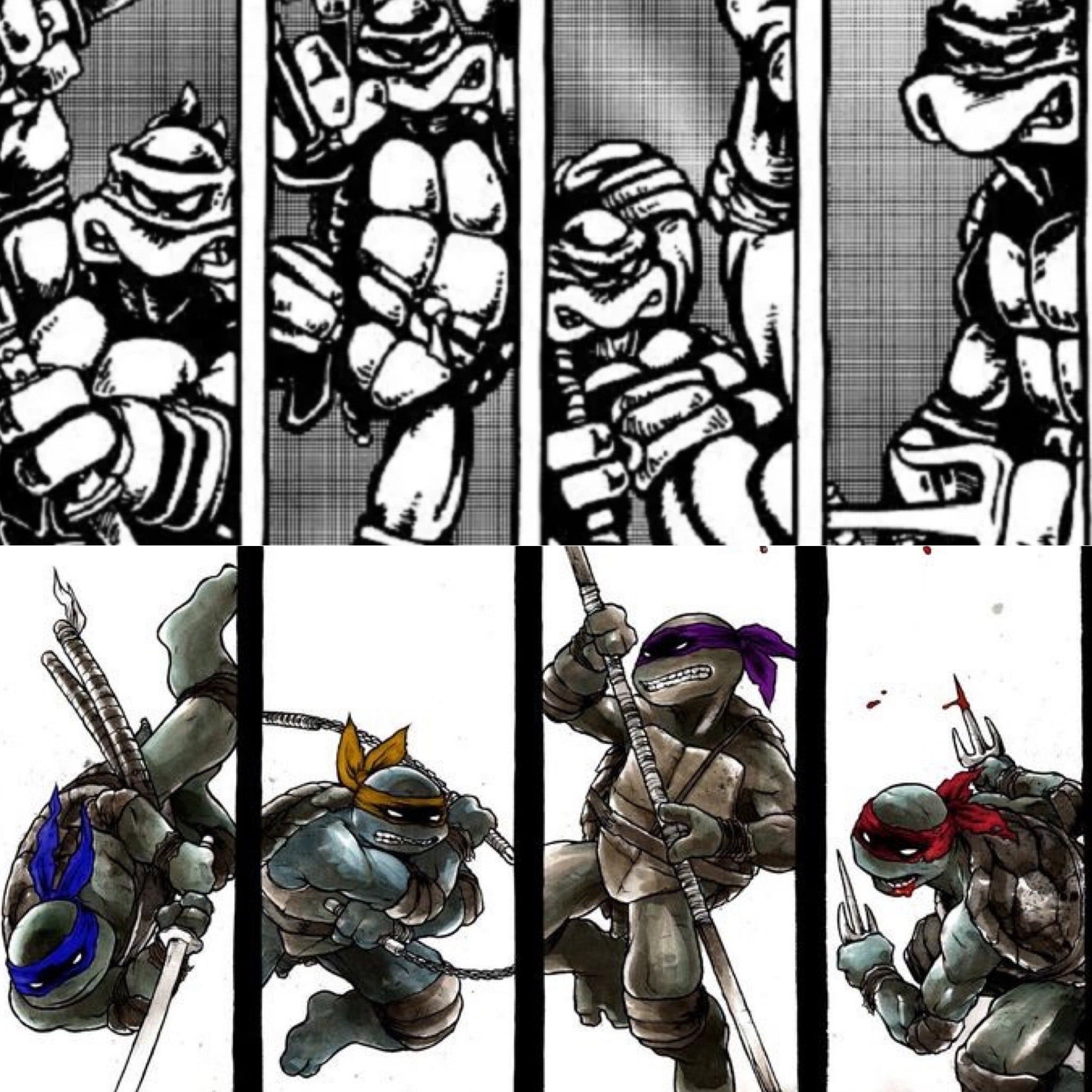
Splinter, of course, is a rat who was also transformed by the ooze, and he becomes the father to the four turtle boys, raising them in the sewers, and teaching them the ways of the ninja in order to protect themselves. In this film, Splinter is very overprotective, never allowing the turtles to interact with any humans, because he believes humans will only want to harm them, a lesson he learned the one time he ventured up to the streets above years ago. So, now they all live underground, the turtles only venturing out to stealthily obtain supplies, all while Splinter does his best to keep them satisfied and home and safe, knowing full well it’s a battle he’s losing, as he watches the boys long for the normal teenage lives they see on their phones, which people have accidentally dropped down sewer grates.
Meanwhile, Superfly, Baxter Stockman’s little boy-fly, has grown up into a crimelord, full of rage at the human world for murdering his father. Along with a gang of fellow mutants, he has a plan for vengeance.
The turtles catch wind of this, and decide to defeat the villain to gain acceptance amongst the human world. Along the way, they meet April O’Neil, the teenage girl and wanna-be reporter who agrees to film them in action, and bring the news of their exploits to the human world, and with that, their plan is set.
Of course, the best laid plans of mice and turtles…

Featuring a stellar voice cast, Mutant Mayhem is a pretty basic coming-of-age story meets superhero origin tale. It’s not reinventing any narrative wheels or anything, and instead allows the familiar franchise a chance to reintroduce itself to the world, while also differentiate itself from past versions. It’s pretty light tematically, but I think that light is good, as ultimately, the die has been cast as to how the world sees the turtles, and honestly, pathos and heart-felt drama can really only go so far in some genres and mediums. I’m less interested in crying teenage angst from ninja turtles as I am in butt-kicking and wise-cracking. There’s plenty of serious elsewhere. Teenage Mutant Ninja Turtles: Mutant Mayhem is mostly just good-looking and funny fun.
In the end, the question of whether or not it’s worth your time is up to you. Like all art, sometimes you just know when it’s aimed straight at your heart and soul, or when you might be open to trying out something new, or when something is simply not for you at all, and like all art, your enjoyment of this film is going to depend on which of those camps you fall into, and whether or not you’re willing to admit that to yourself before going in.
Me? I love being a turtle.
